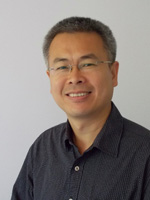Advanced Suspension Control System Design for Vehicle and Driver Ride Comfort
Abstract
To reduce vibration transferred from a variety of vibration sources, such as uneven road surface and vibrating tools, to vehicle, passenger, and driver body, either vehicle or seat or both suspension system has been adopted by most vehicles. Vehicle suspension is able to provide ride comfort in addition to road holding and support of vehicle weight. Three main kinds of suspensions, namely, passive, active, and semi-active suspensions, have been proposed to deal with the conflicting requirements on ride comfort, suspension deflection limitation, and road holding capability. In particular, semi-active suspensions offer desirable performance comparable to active suspensions without requiring high power consumption and expensive hardware. Devices based on MR dampers are viable candidates for semi-active control of vehicle suspension systems. Due to the inherent nonlinear nature of MR dampers, one of the challenging aspects of utilising MR dampers to achieve high levels of performance is the development of appropriate modelling and control strategy that can take advantage of the unique characteristics of MR dampers. Vehicle seat suspension is also regarded as one of the most effective ways to reduce vibration, in particular, for heavy duty vehicles. Most of the currently available active and semi-active seat suspension control systems use linear actuators/dampers to provide the required forces to reduce vibration, however, the system structure is complex and the cost is high. In this talk, different suspension control issues, such as parameter uncertainty, actuator time delay and saturation, and their corresponding solutions will be discussed. The modelling and control of several advanced MR damper based vehicle suspension control systems will be presented. The active and semi-active seat suspension control systems with rotary actuators/dampers are also introduced to overcome the cost-effectiveness issues. Acceleration measurement based friction estimation algorithm and other relevant control strategies are proposed and implemented with experimental validation.
Biography
Haiping Du received the Ph.D. degree in mechanical design and theory from Shanghai Jiao Tong University, Shanghai, China, in 2002. He was a Research Fellow with the University of Technology, Sydney, from 2005 to 2009, and was a Postdoctoral Research Associate with Imperial College London from 2004 to 2005 and the University of Hong Kong from 2002 to 2003. He is currently a Professor at the School of Electrical, Computer and Telecommunications Engineering, University of Wollongong, Wollongong, NSW, Australia. He is a Subject Editor of the Journal of Franklin Institute, an Associate Editor of IEEE Transactions on Industrial Electronics and IEEE Control Systems Society Conference, an Editorial Board Member for some international journals, such as Journal of Sound and Vibration, IMechE Journal of Systems and Control Engineering, Journal of Low Frequency Noise, Vibration and Active Control, and a Guest Editor of IET Control Theory and Application, Mechatronics, etc. His research interests include vibration control, vehicle dynamics and control systems, robust control theory and engineering applications, electric vehicles, robotics and automation, smart materials and structures. He is a recipient of the Australian Endeavour Research Fellowship (2012).
ISITIA 2020 Keynote Speakers
 Finding Hidden Patterns in Data or ‘How to Find the Hammer to Your Nail’: A Collaboration between Human and Machine
Finding Hidden Patterns in Data or ‘How to Find the Hammer to Your Nail’: A Collaboration between Human and Machine
Abstract
Reading the research papers of others, you may wonder which process led the authors to decide to use a particular analysis method. It could be that they are ‘just’ using an analysis method that is common to the field, but particularly when the method is novel to the field, it may be hard to understand how the authors thought of this new method. In this lecture I will give several examples of how this could be achieved from my own line of research in clinical neuroengineering. As an applied mathematician, I like to think of mathematics as a large toolbox, from which you ‘only’ need to choose the right tool(s) to tackle your problem. In real life, you would probably not use a hammer to fix a screw, but yet, in research it can be daunting to find ‘the hammer to your nail’. During this lecture, I will explain how 1) to identify and 2) specify your nail so that 3) you can choose the best hammer to hit your nail. I will do this by providing examples in which data visualization and data mining, as well as data classification and prediction are used as tools. These examples will support my opinion that the best results are achieved by collaborating between human (knowledge of clinical relevance) and machine (learning algorithms).
Biography
Natasha Maurits (Applied Mathematics (MSc 1994), Biophysical Chemistry (PhD 1998)), is full professor of Clinical Neuroengineering at the department of Neurology of the University Medical Center Groningen, the Netherlands, as well as Chief Scientific Information Officer (CSIO), heading the section Information Management for Research, Education and Training of UMCG (https://www.rug.nl/staff/n.m.maurits/). She is also visiting professor at Strathclyde University in Glasgow (UK) and the University of Lincoln (UK). Her research focuses on clinical neuroengineering, in particular biomedical signal analysis, multimodal neuroimaging, high-density EEG recording, visualization of high-dimensional data and home-based diagnosis and monitoring with applications in neurology (movement disorders, neuromuscular disorders, dementia, stroke, trauma) and cognition (healthy ageing, dyslexia).
She has published more than 140 international peer-reviewed papers as well as two books (From neurology to methodology and back: an introduction to clinical neuroengineering (2012) and Math for scientists: refreshing the essentials (2017), both with Springer). Furthermore, she is a senior member of IEEE, member of the Advisory Board of the School of Mathematics of the University of Groningen (UoG), member of the Scientific Advisory Board of the Lincoln School of Mathematics and Physics (UK) and chair of the Dutch Biomedical Engineering Conference.
Within the Dutch VSNU program Digital Society, Health & Well-being, she represents the UMCG/RuG with a specific focus on topics such as Healthy Ageing, e-Health and hospital at home (H@H). From her perspective as CSIO of UMCG she is very interested in the GO FAIR initiative, personal health environments, (medical and care) data coupling and sharing and its ethical and legal implications.
ISITIA 2020 Keynote Speakers
 Transient Stability Analysis for Obtaining Critical Clearing Time and Setting of Relay Protection based on Critical Trajectory and Time Domain Simulation Methods
Transient Stability Analysis for Obtaining Critical Clearing Time and Setting of Relay Protection based on Critical Trajectory and Time Domain Simulation Methods
Ardyono Priyadi
Abstract
The power system development causes Transient Stability Analysis (TSA) has an important role in the operation, security, reliability, and resiliency for electric power systems. There are two mains aim for TSA, i.e. obtain Critical Clearing Time (CCT) and Setting of Relay Protection. Firstly, TSA calculated CCT has been established by numerical integration of non-linear differential equations. This method is quite accurate for obtaining the CCT. This method has also ability to provide an overview of the power system stability due to transient symptoms experienced by the power system. However, time consuming of numerical integration in the calculating CCT process causes this method requires a long time in the process of iteration. It is not effective when applied to the power system transient stability analysis, because the pattern changes due to disturbances occur on a very fast. Additionally, this method cannot reach the UEP, even though it is for a single machine system. The CCT is not also directly obtained by this method. Secondly, TSA for setting of Relay Protection has done to obtain the setting of voltage drop when short circuit occur in the regular power system.
This talk is based on the obtained direct CCT by Critical Trajectory Method (A, B, C, & D Methods) and improved CCT using Super Capacitor Energy Storage (SCES). It also describes simplest way for on-line TSA by developing Wide Area Measurement (WAM) technology. Furthermore, setting of relay protection using TSA is to obtain the properly setting of export-import relay (32 PQ) when short circuit occur inside grid or infinite bus. This setting has been implemented and run well in the industrial power plant.
Biography
Ardyono Priyadi received his bachelor degree in Electrical Engineering from Institut Teknologi Sepuluh Nopember (ITS), Indonesia in 1997, master and Ph.D. degree in Electrical Engineering from Hiroshima University, Japan in 2008 and 2011. He is currently Head of Electrical Engineering Department, ITS and Head of Indonesian Electrical Engineering Higher Education Forum Regional 7 (Fortei Regional 7) East Java. He is also awarded as Best Young Researcher ITS in 2000 and Best Accomplished Lecturer ITS in 2017. His research interest is power system transient and dynamic stability, renewable energy, smart grids, and identification of power systems.
1 December 2019
Paper Submission Page Open
1 April 2020 1 May 2020
Paper Submission Due (extended)
15 May 2020
Acceptance Notification
22 June 2020
Registration Due
3 June 2020
Camera Ready Due
3 July 2020
Video Presentation Due
22-23 July 2020
Conference Date
1 December 2019
Paper Submission Page Open
1 April 2020 1 May 2020
Paper Submission Due (extended)
15 May 2020
Acceptance Notification
22 June 2020
Registration Due
3 June 2020
Camera Ready Due
3 July 2020
Video Presentation Due
22-23 July 2020
Conference Date
This site uses cookies. Find out more about cookies and how you can refuse them.

